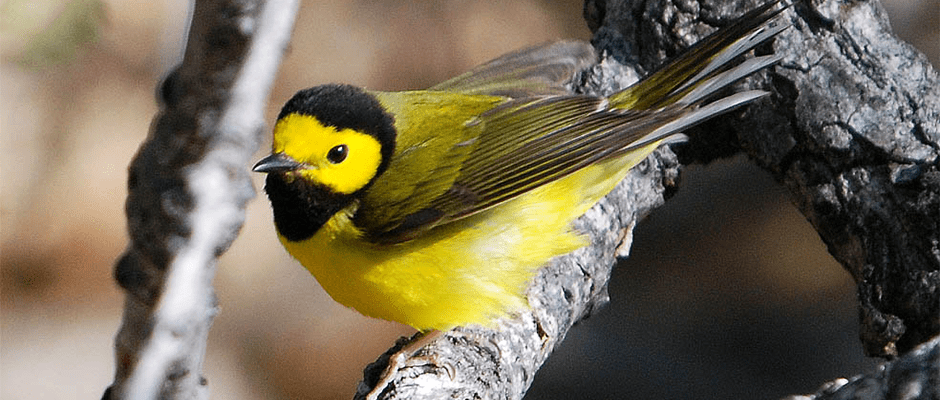Share this article
Hooded warbler males ditch nestlings to molt
Hooded warbler (Setophaga citrina) moms must do double duty when the fathers tend to their feathers rather than their chicks.
When nesting male hooded warblers replace their plumage in the late summer, a new study from Pennsylvania found, they commonly vanish to molt, leaving the females to rear their nestlings.
Like other North American warbler species, as the breeding season nears its end, the hooded warbler loses its wing feathers and tail feathers, which it flicks open to reveal white tail spots that help startle hidden insect prey. Over the month-long molt, birds can’t fly, let alone fulfill their parental responsibilities.
The males “desert the young, switch into molt and let their mate do the rest of parental care,” said Ronald Mumme, author of the paper published in The Auk: Ornithological Advances.
A biology professor at Allegheny College, Mumme went searching for hooded warblers towards the close of nesting season every August from 2013 to 2017 in the dense understories of northwest Pennsylvania. He used call playbacks to attract 62 molting individuals into mist nets and locate their fledglings to determine if they were still caring for them. He discovered that nearly 70 percent of the birds — almost always males — had abandoned their nestlings or fledglings, forcing their partners to take care of their offspring alone.
“Most of the time, males go into molt first, desert and let the female do all the parental care herself,” Mumme said. “Late in the year, they’re expecting they might be deserted, so they have two or three eggs, rather than three or four eggs early in the season. Females handle that themselves without difficulty. If a female is deserted by a male, there’s no hard feelings because next year, more than half the time, she re-mates with the same male.”
He plans to investigate how male desertion affects nestlings and females, which cope by pushing their molt to September and their migration even further down the road so they can look after fledglings.
“Part of the hooded warbler strategy is that male desertion later in the year is the way it’s done,” Mumme said. “It’s not causing the female huge problems. It’s not causing chicks huge problems. It’s unavoidable that a lot of females are going to be deserted, but females are set up to deal with that contingency.”
Past observations have raised the possibility that desertion due to molt also occurs in other bird species, he said, such as black-throated blue warblers (Setophaga caerulescens) and prairie warblers (Setophaga discolor).
“The life cycle for migratory birds is complicated,” Mumme said. “They have to migrate north, breed, molt, prepare for southward migration. This transition from parental care to molt is not well understood. Hooded warblers are telling us people should start paying attention. Looking at other species will help us understand what complexities are involved late in the breeding season as birds make this transition.”
Header Image: ©Jerry Oldenettel








